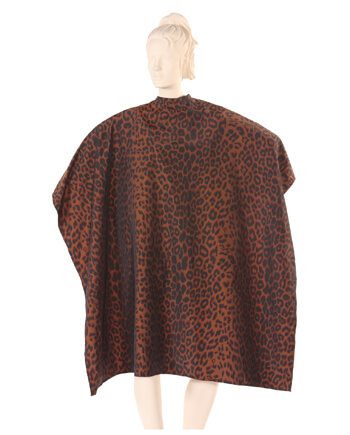Barber capes are an essential tool for any stylist or barber, providing protection for your client’s clothing and keeping them comfortable during their appointments. Barber capes vary greatly, though. There are a variety of different features to consider when choosing the perfect barber cape for your business. From materials and design to functionality and durability, finding the right cape can make all the difference in your client’s experience and your stylists’ efficiency. In this blog post, we’ll explore the 10 features to look for in the perfect barber cape and why each one is important for providing the best possible experience for your clients. Whether you’re a seasoned salon owner or just starting out, this guide will help you choose the perfect barber cape for your business.
1. Comfortable Fabric
The fabric of your barber cape should be soft and comfortable for your clients. Look for capes made from materials like polyester, nylon, or microfiber that are gentle on the skin and won’t cause irritation or discomfort.
2. Lightweight Design
A heavy barber cape can be uncomfortable for clients and can make it harder for you to move around while you’re working. Look for capes that are lightweight and easy to move around in, without sacrificing durability.
3. Water-Resistant Material
Water-resistant barber capes are a must-have in any salon. They’ll protect your clients’ clothing from water, hair, and other products, and will help to keep your salon looking clean and professional.
4. Adjustable Neck Closure
A good barber cape should have an adjustable neck closure that fits comfortably around your clients’ necks without being too tight or too loose. Look for capes with a snap, Velcro, or buckle closure that can be easily adjusted to fit different neck sizes.
5. Generous Size
Make sure the barber cape you choose is large enough to cover your clients’ clothing completely. A cape that’s too small may not provide adequate protection, while a cape that’s too large may be cumbersome for your clients to wear.
6. Durability
Barber capes take a lot of wear and tear, so you want to choose one that’s durable enough to withstand frequent use and washing. Look for capes made from high-quality materials that can stand up to repeated use and won’t fade or shrink in the wash.
7. Easy to Clean
Barber capes can quickly become dirty and stained, so it’s important to choose a cape that’s easy to clean. Look for capes that can be machine washed or wiped down with a damp cloth, and avoid capes that require special cleaning or maintenance.
8. Stylish Design
Your barber cape should not only be functional but also stylish and reflective of your salon’s brand. Look for capes with attractive patterns, colors, or logos that match your salon’s decor and create a cohesive look.
9. Hair-Repellent Material
Barber capes should be made from hair-repellent material that doesn’t attract or trap hair. Look for capes with a smooth surface that hair can easily slide off of, and avoid capes made from materials like cotton or flannel that can trap hair and make it harder to clean.
10. Affordable Price
Finally, the perfect barber cape should be affordable and within your budget. Look for capes that provide good value for the price and that won’t break the bank.
Conclusion
Choosing the right barber cape for your business is essential for providing the best possible experience for your clients. By considering the 10 features outlined in this guide, you can ensure that your capes are durable, comfortable, and functional, improving both the client experience and your stylist efficiency. Whether you prioritize materials, design, or functionality, there’s a perfect barber cape out there for every salon. So, take the time to evaluate your options, test out different styles, and invest in the capes that best fit your needs. Your clients (and your stylists) will thank you for it.

As the editor of the blog, She curate insightful content that sparks curiosity and fosters learning. With a passion for storytelling and a keen eye for detail, she strive to bring diverse perspectives and engaging narratives to readers, ensuring every piece informs, inspires, and enriches.










